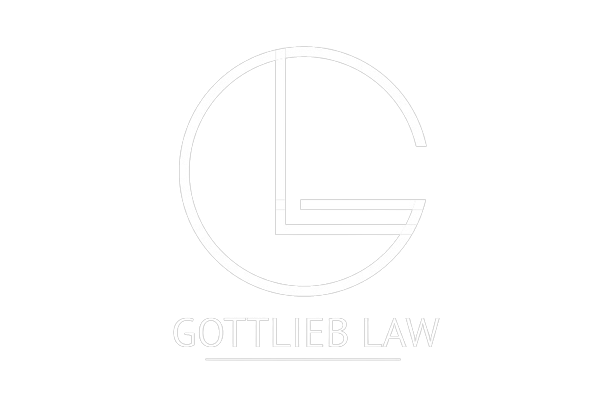Gottlieb Law, PLC provides this article for information purposes only and nothing herein creates an attorney-client relationship. You should not take any actions in reliance on any of the information contained herein without consulting with qualified legal counsel first and reading this article is not a proper substitute for seeking legal advice of your specific situation. Laws change over time and you should seek counsel to discuss any specific legal questions.
Disputes are not uncommon in real estate, and they cause disruptions and financial strain for all parties involved. Navigating these conflicts through traditional legal channels often proves to be a time-consuming and costly endeavor, which explains why mediation, a practical and cost-effective alternative, has gained prominence in the real estate industry. Mediation in real estate disputes offers a collaborative platform for disputing parties to engage in open dialogue, facilitated by a neutral third party, with the goal of reaching a mutually agreeable resolution while reducing the cost of retaining a real estate attorney.
Read on to learn more about mediation, explore its benefits in resolving real estate disputes and shed light on why it has become an increasingly favored solution for those seeking an efficient and economical path to resolution.
The Mediation Process
Mediation in real estate disputes follows a structured yet flexible framework designed to foster open communication and collaborative problem-solving. The process typically begins with opening statements, where each party outlines their perspective on the issue. This initial step sets the stage for constructive dialogue to help resolve real estate disputes between multiple parties. Joint sessions follow, allowing parties to express their concerns directly to each other under the guidance of the mediator. This face-to-face interaction promotes understanding and can uncover shared interests.
Private sessions, a hallmark of mediation, offer an opportunity for confidential discussions between the mediator and each party individually. Here, concerns, fears or potential solutions can be explored more candidly. The mediator then facilitates negotiation, helping parties generate creative solutions and guiding them towards a mutually agreeable resolution.
The mediation process is characterized by its adaptability; the mediator may employ various techniques to address specific challenges. By emphasizing collaboration and understanding, mediation creates a conducive environment for parties to actively participate in crafting solutions, fostering a sense of ownership over the outcome. This structured yet customizable approach distinguishes mediation as a highly effective and efficient alternative to traditional legal avenues in resolving real estate disputes.
The Role of the Mediator
A mediator in real estate disputes plays a pivotal role as a neutral facilitator, ensuring a fair and balanced process. Imbued with impartiality, the mediator guides parties through the dialogue, fostering effective communication and understanding. Possessing exceptional communication skills, the mediator helps articulate concerns, encourages active listening and diffuses tension.
Beyond neutrality, the mediator provides structure and guidance to the proceedings. They set the agenda, steering discussions toward productive ends. In managing private sessions, the mediator navigates emotions and ensures confidentiality, creating a space for parties to express candid views. By skillfully orchestrating the negotiation process, the mediator empowers disputing parties to collaboratively explore solutions, making mediation a dynamic and effective means of resolving real estate conflicts.
The Benefits of Mediation in Real Estate Disputes
The benefits of mediation in real estate disputes encompass efficiency, cost-effectiveness, and are commonly used to prevent disputes from going to litigation. They are focused on relationship preservation, the ability to tailor solutions and a more informal and flexible process. In further detail, these benefits are as follows:
- Time Efficiency: By sidestepping lengthy court procedures, parties can promptly address their concerns and move forward with their real estate transactions.
- Cost-Effectiveness: With no protracted courtroom battles and minimized attorney fees, parties can allocate resources more efficiently, making mediation an attractive and economical choice.
- Preservation of Relationships: Mediation, by its collaborative nature, enables disputing parties to maintain a level of communication and understanding. This preservation of relationships can be crucial for future business dealings, avoiding long-term animosity that may result from adversarial legal processes.
- Customized Solutions: Unlike rigid legal rulings, mediation empowers parties to actively participate in crafting solutions tailored to their specific needs and concerns.
- Informality and Flexibility: The flexible nature of mediation accommodates the unique dynamics of each case, fostering a collaborative atmosphere that encourages open communication and problem-solving.
These advantages collectively position mediation as a compelling and pragmatic choice for resolving conflicts in the real estate arena.
Key Considerations for Choosing Mediation
When contemplating mediation for real estate disputes, several critical considerations should guide the decision-making process. First is the volunteer aspect: All involved parties must willingly participate if they wish to have an effective mediation session. This voluntary engagement fosters a cooperative atmosphere conducive to resolution.
Confidentiality is another pivotal factor, as parties engaging in mediation can candidly discuss their concerns with the assurance that these discussions remain private. This confidentiality not only encourages openness but also ensures that sensitive information disclosed during the process does not become public record. Finally, these mediated agreements must be legally binding, providing parties with assurance regarding the outcomes of the mediation process.
Find an Experienced Arizona Real Estate Attorney
Engaging an attorney in any real estate dispute is essential for guidance through complex procedures and the protection of your rights. An experienced real estate attorney ensures proper representation, improves your understanding of legal nuances and strategically navigates the process to secure the best possible outcome. Our firm can help you through mediation or other avenues while pursuing your best interests. Gottlieb Law provides industry-leading legal representation for anyone involved in Arizona real estate. Contact our firm today at 602-899-8188 or schedule an initial consultation on our contact us page.
Gottlieb Law, PLC provides this article for information purposes only and nothing herein creates an attorney-client relationship. You should not take any actions in reliance on any of the information contained herein without consulting with qualified legal counsel first and reading this article is not a proper substitute for seeking legal advice of your specific situation. Laws change over time and you should seek counsel to discuss any specific legal questions.





